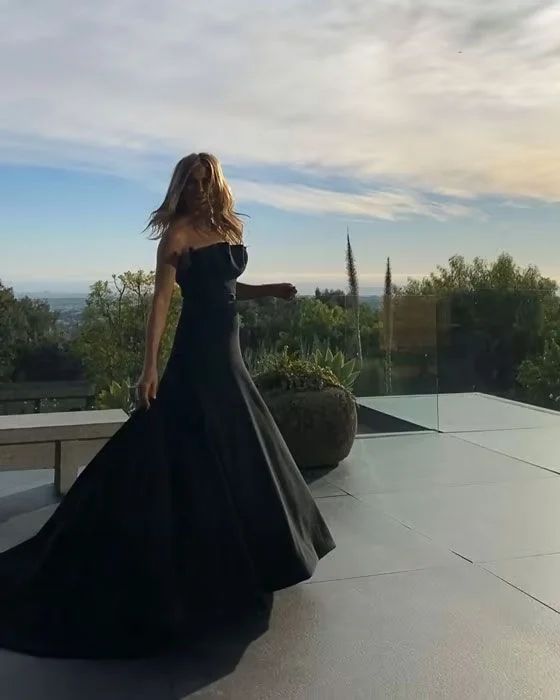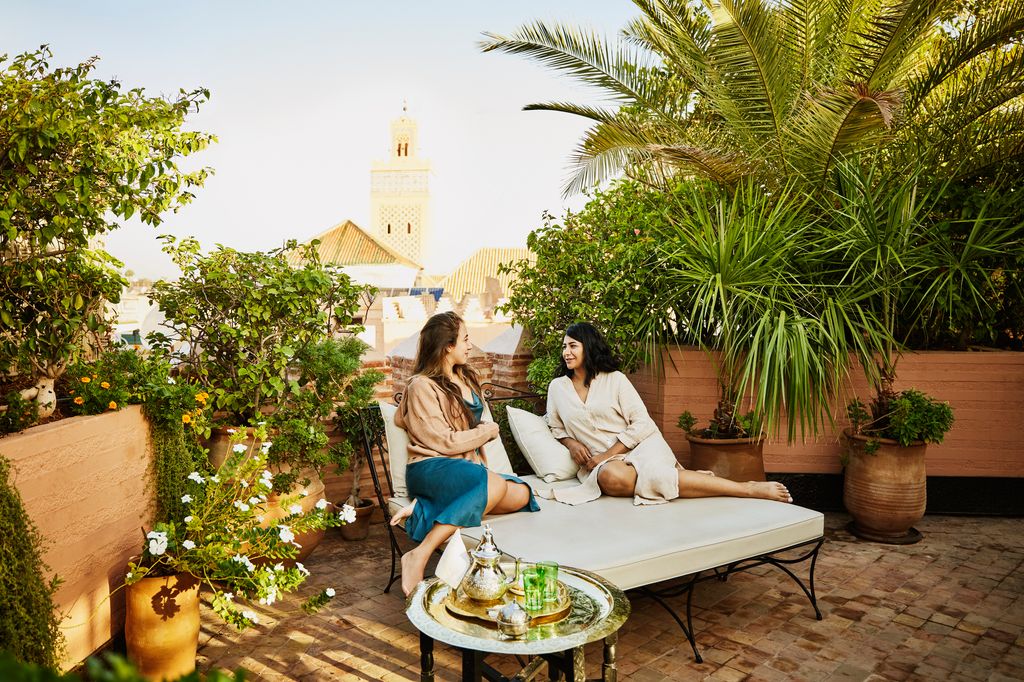Owing to her lead role in the hit nineties sitcom Friends, Jennifer Aniston has long been synonymous with New York. Though the actress, 55, actually lives in Bel Air, her at-home life was once a case of life imitating art as she formerly owned a glamorous $11 million penthouse at 299 West 12th Street in the West Village, a neighborhood famed for its artistic residents and designer boutiques – very Rachel Green.
The crowning glory of the space remains its incredible rooftop garden featuring a solarium and breathtaking panoramic views of the Hudson River, West Village, FiDi, Meatpacking District, and even Hudson Yards.
“Jennifer’s former garden does a great job at maximising the space available and it’s really practical,” Chris Bonnett, founder of GardeningExpress.co.uk tells us. “The pergola is a great way to get some added shade to help protect plants that don’t like being in the harsh, direct sunlight. Vertical structures like this and trellises are another way to maximise gardening space because you can introduce climbing plants and add even more colour and greenery.”
https://www.instagram.com/p/CfHKxHwOLY5/?utm_source=ig_embed
Meanwhile, Kunal Trehan, interior designer and founder of Touched Interiors, is taken in by the garden’s architectural structure.
The garden’s architectural structure
“The white conservatory-style pavilion brings a refined, almost romantic character to the space, contrasting beautifully with the surrounding brickwork and the modern city skyline beyond,” he says. “This combination of classical charm and contemporary views creates a garden that feels both timeless and distinctive.
“The planting is equally well considered,” he adds. “Rather than forcing a manicured look, it embraces the charm of container gardening with terracotta pots and timber planters. These materials bring warmth and texture underfoot, while the mix of evergreens, herbs, and flowering plants gives life and movement throughout the seasons.”
On trend for 2025
Though the penthouse is in Jennifer’s property back catalogue, the garden remains on trend this year.

“For 2025, garden design is embracing a deeper sense of purpose, with outdoor spaces becoming calm, restorative sanctuaries that connect us to nature,” Kunal explains. “This garden beautifully captures that direction, with an emphasis on natural textures, thoughtful planting, and spaces designed for relaxation and reflection.

Jennifer’s home in Bel Air now has a full sized garden
“Wellness-led design continues to rise, and we are seeing an increased focus on features such as water elements, sculptural seating, and outdoor spa experiences, including hot tub, ice baths, and plunge pools. The garden’s overall feel is curated yet effortless, aligning with the growing desire for a slower, more intentional way of living. It is not about over-designing, but about creating a space that feels personal, grounded, and beautifully balanced.”
Keeping it practical
When curating a rooftop garden like Jennifer’s, there are practical elements to consider. “In Jennifer’s former garden, the greenhouse and pergola offer protection from harsh weather, and putting more vulnerable plants into pots will allow you to move them as and when you need,” Chris Bonnett explains.

“This is also a reason why effective drainage is key. Poor drainage on a rooftop garden can not only damage your plants but can also cause structural damage. For this reason, you may want to consider raised planters or pallets, as these will allow the water to flow underneath. You can also add drainage mats.”
Adding value
Once you have the practical elements down, a rooftop garden can add great financial and visual value to a space.

“A rooftop garden can completely transform the visual identity of a property,” Kunal says. “From a design perspective, it adds softness and greenery in places where one would least expect it, turning a functional roof into a statement of lifestyle and taste.
He adds: “When viewed from within the property, it creates a tranquil outlook and an immediate sense of luxury. From the outside, it offers visual contrast and elevates the architecture, giving a sense of exclusivity and refinement.”



